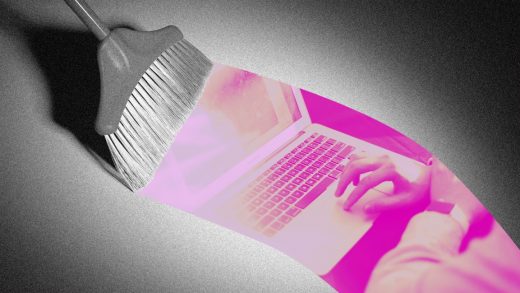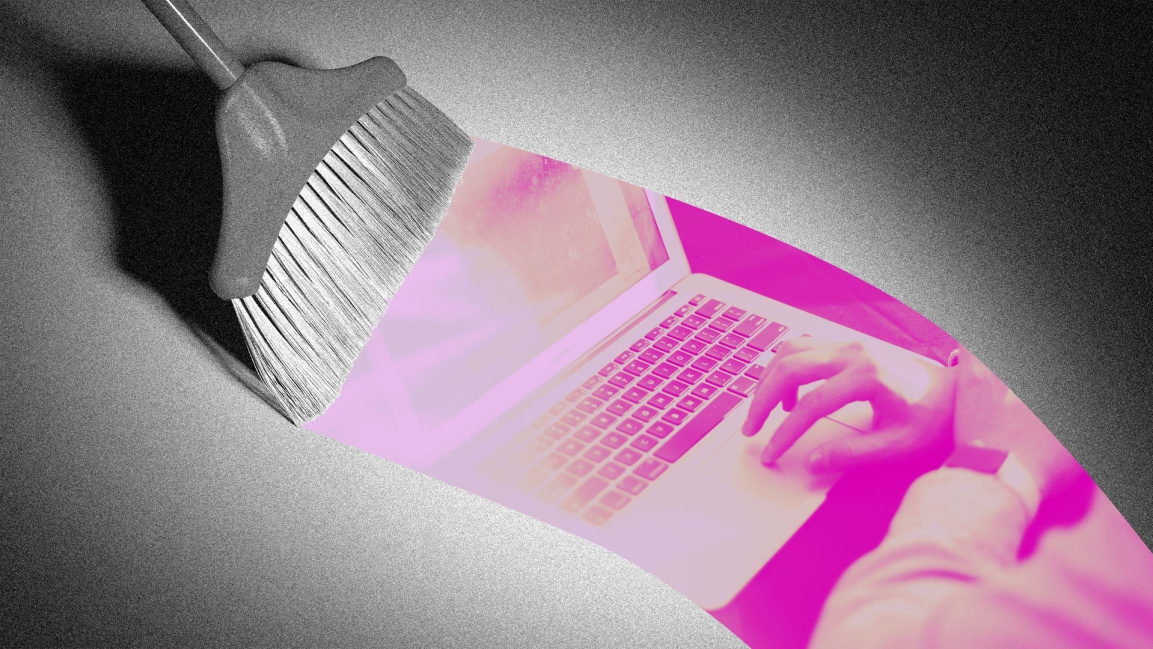Sick of your screen? Here’s how to find a healthy balance with your workplace tech
Finding work–life balance has never been easy, even before COVID-19, but it became even more difficult as home and office merged this past year. Remote workers may find that they lost track of days, worked longer hours, and were never able to get away from their computer screens.
What’s more, with a continuous barrage of emails, Slack notifications, and social media posts, the average worker is being constantly inundated with technology. That’s why in today’s work environment, it’s not only important to search for some form of work–life balance; you must also find a work–technology balance.
Avoiding adverse effects of constant tech use
Adjusting to the new normal has been tough for everyone. But by formulating a plan for yourself and your employees, you can mitigate the impacts of pandemic burnout, personally and professionally. This involves taking additional steps to make sure remote workers are being health-conscious and ensuring their systems are secure as well.
Many studies detail the detrimental effects of constant technology exposure. Proven effects include sleep deprivation, attention deficits, neck pain, poor posture, diminished visual acuity, hearing problems, and even depression.
So how do you effectively perform your job as a remote worker while avoiding the side effects of excessive technology use? You can take several steps to organize your professional and personal life to maximize productivity and avoid burnout.
Schedule all work time
When working from home, it’s easy to let work worm its way into every hour of the day. Simply walking by your computer may be enough to make you stop and check your various digital communication channels. It’s understandable in the Zoom-meeting era to feel like you need to maintain constant contact, but doing so reinforces the feelings that work—and tech—never leaves you alone.
Instead, set limits for yourself and your staff on when it’s work time and when it’s time to turn off the computer. Make sure to be strategic about virtual collaboration and maximize your time during scheduled meetings to avoid monopolizing your and your employees’ days.
Just because you’re working from home does not mean you can’t have an actual schedule. Plan your day as if you were going into the office. To the extent you can, schedule time for work that doesn’t involve conference calls, and keep that time sacrosanct so you can check some things off your own to-do list.
Of course, attending meetings will be unavoidable sometimes, but be sure to schedule them during normal office hours and be productive on the calls so they don’t fill your evenings as well. Outside of your scheduled work hours, avoid checking your email or Slack channels. They will still be there when your work hours resume.
Remote office workers are not the only ones who need to be cognizant of keeping a schedule. As the average freelancer makes around $45 per hour in the United States, more and more people are joining the freelance ranks.
Freelance work involves substantial time in front of a computer, so freelancers should also try to take a break from technology every chance they get. This is particularly true if you’re working with international clients. If your clients or employees are in different time zones, be strategic about planning and scheduling so no one is stuck working at midnight to accommodate others.
Keep up on your cleaning
Just as your work hours shouldn’t have changed simply because you’re working remotely, your regular household activities haven’t disappeared either. No matter what your role was before—whether you were the one running errands, cooking, cleaning, doing yard work, or all of the above—this probably didn’t change much when you started working from home.
Make the time to keep up with everyday activities to balance out screen time. Taking a few minutes away from the home office to run a quick errand or pull a few weeds will force you to get outside while still being productive. You are also creating an effective barrier between work and home that helps you step away from the incessant call of technology.
Another way to create this barrier is to have a place in your house where you do not work. A lot of modern companies are building work-free spaces in offices, and you can do the same at home. This might be a study, loft, or back deck where you decide to only relax—no laptops allowed. If space is a limiting factor, at the very least, don’t do work in bed. Your bed should be for sleep and other relaxation, not late-night work sessions.
Use technology to your advantage
Even during the workday, technology does not need to be a constant presence. It may sound ironic, but you can actually harness the technology you have to ensure you aren’t using too much technology. Use your electronic calendar to schedule time to step away from your screen, email, and other communication channels. Use the Do Not Disturb function or similar features on your applications to turn off notifications for several hours a day.
You don’t need to become completely inaccessible. Everyone has critical issues they must deal with and clients or bosses who sometimes want 24/7 availability. But recognizing which tasks are critical and which can be pushed until the next day is important in maintaining balance. Properly prioritizing your tasks for the day can help you find those hours to put aside for a respite from technology.
As a remote worker, security is also of the utmost importance, and technology can help here as well. Freelancers and remote employees should consider using a virtual private network (VPN) for secure communication. A VPN establishes an encrypted communication tunnel between you and your clients to decrease the chance of exposing data to hacks. That way, you can be more confident that remote work is not compromising your system security.
Regularly ‘take five’
Leaving your home office to go for a brief, disconnected walk does far more than just give you relief from your devices. Walking has numerous general physical benefits and helps relieve many of the symptoms of sitting too long in front of a screen.
Plus, taking a break to do some physical activity will help clear your head and improve your overall productivity. Taking a walk can boost creative thinking and help you calm down and refocus if something at work is stressing you out.
You can also use your break time for passive tasks that can be happening while you are away. Before you leave your desk, restart your computer to allow it to update and install the latest security patches so when you come back, you can be more confident that your technology is secure and ready to go.
In our increasingly digital world, technology is a powerful ally when you know how to use it to your advantage. With a few simple changes in your daily practices, you can get the most of your remote working arrangement without falling victim to technology burnout.
Nahla Davies is a software engineer and a technical copywriter based in New York.
(99)



